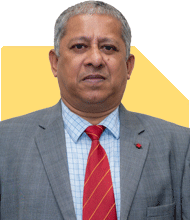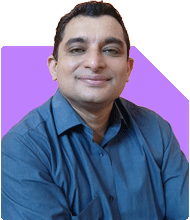Hi,my salary is one lakh in hand,I am 33 years old I have sip of 11000,ppf of 1.5 lakh annually and epfo deductions of 13000 monthly.My monthly expenses is rent-8500,food-10000,and other expenses 5000. My concern is how to increase investment as I m expecting a baby this year
Ans: You have shared useful details about your income, expenses, and current investments. This gives a strong foundation to plan effectively.
You are earning Rs. 1 lakh in hand. At age 33, expecting a baby, and already having SIPs, PPF, and EPF — your financial behaviour is responsible and consistent. Let’s evaluate step by step and offer a 360-degree plan.
Income and Expense Assessment
You have a net monthly income of Rs. 1 lakh.
Your expenses are:
Rent: Rs. 8,500
Food: Rs. 10,000
Other: Rs. 5,000
Total: Rs. 23,500
This leaves a monthly surplus of about Rs. 76,500.
Your monthly investment commitments:
SIP: Rs. 11,000
EPF: Rs. 13,000
PPF (annual): Rs. 1.5 lakh = Rs. 12,500 per month
Your total monthly investment is approx Rs. 36,500.
After investments and expenses, you still save about Rs. 40,000 each month. That’s a good position to be in.
Upcoming Life Stage: Baby in the Family
Welcoming a child is a blessing and also a financial responsibility. Your planning must now include the baby’s expenses.
Prepare for the following costs:
Delivery and hospital expenses
Medicines and vaccinations
Baby food and care products
Day care or nanny later
Insurance for child
Education planning
From your remaining Rs. 40,000 monthly surplus, set aside Rs. 10,000 in a separate savings account from now. Use it only for baby-related costs.
Emergency Fund Planning
Currently, your monthly expenses are about Rs. 23,500.
After the baby arrives, expenses will rise. Let’s estimate future monthly expenses at Rs. 35,000 to Rs. 40,000.
You must have 6 months of this amount as emergency fund. That is about Rs. 2.4 lakh.
Build or maintain this in:
Sweep-in FD
High-interest savings account
Liquid mutual funds (regular plan through MFD with CFP)
Avoid keeping too much in hand or in low-interest accounts.
Insurance Protection First
Life Insurance:
Now that you are going to be a parent, life cover is urgent.
You must buy a term life plan of Rs. 1 crore at least.
Choose a plain term plan with no returns.
Don’t mix insurance and investment.
Health Insurance:
You and your spouse must have at least Rs. 5 lakh individual health cover.
A family floater policy for Rs. 10 lakh is also good to add.
Choose a plan with maternity and newborn cover if possible.
Also include critical illness cover for Rs. 10 to 15 lakh.
Optimise Existing Investments
You are already doing SIP of Rs. 11,000.
PPF investment of Rs. 1.5 lakh per year is also healthy.
EPF contribution of Rs. 13,000 monthly is strong.
These are good long-term habits. But let’s fine-tune:
Mutual Funds SIP
Make sure you are investing through a Mutual Fund Distributor who is also a Certified Financial Planner.
Don’t invest in direct plans yourself.
Direct funds may look cheaper but offer no guidance.
Regular plans through qualified experts offer better long-term results and monitoring.
Also, direct plans may lead to poor scheme selection and lack of review.
Prefer Actively Managed Funds
Index funds are not suitable for all.
Index funds follow the market blindly.
No flexibility in changing the stocks in bad times.
Actively managed funds have professional fund managers.
They shift between sectors based on market conditions.
This helps in reducing downside risk.
Talk to your mutual fund distributor and review your portfolio.
Make sure you are not overexposed to one category.
Have a mix of large cap, flexi cap, and hybrid funds.
Avoid too much in small cap or sector-specific funds right now.
Step-Up SIP Option
You may consider increasing your SIP with time.
Use Step-Up SIP option:
Increase SIP by Rs. 1,000 every 6 months.
Or increase Rs. 2,000 once a year.
This uses your future income growth to build wealth.
Save for Child’s Education
Start a separate investment bucket for this goal.
Time is on your side. You have 15 to 17 years.
Start small with Rs. 5,000 a month.
Use a child education goal-oriented fund or a combination of diversified equity and hybrid funds.
Again, invest through regular plan with a Certified Financial Planner.
Avoid ULIPs and child insurance policies — they have high charges and poor returns.
PPF is Good – But Use with Purpose
You are investing Rs. 1.5 lakh per year in PPF.
That’s fine if it is for:
Retirement
Partial use for child’s education
But don’t exceed this limit.
Returns are stable but not high.
It works best for fixed, long-term goals.
PPF has 15-year lock-in.
Liquidity is limited, though partial withdrawals are allowed after a few years.
Don’t stop it. But don’t expect it to fund all your goals.
Tax Planning
You are already investing in PPF and EPF.
Combined, they cover Rs. 1.5 lakh under Section 80C.
If you need more deductions, check:
Health insurance under 80D
Term insurance premiums under 80C
NPS contribution under 80CCD(1B) (optional, if surplus remains)
Avoid ELSS funds if 80C is already full.
They are equity funds, better used for long-term goals instead of just tax saving.
Budget Adjustments Post Baby
After the baby’s arrival:
Expect expenses to rise by Rs. 8,000 to Rs. 12,000
You may need to pause increase in SIPs
Keep insurance premiums up to date
Revisit your budget every 6 months
Be flexible but consistent.
Continue your SIPs even if other expenses rise.
Cut entertainment and non-essential spending if needed.
Child Future Goal Planning
Think in terms of three goals:
Short-term (baby’s early expenses)
Mid-term (schooling, extra-curriculars)
Long-term (higher education, marriage)
For long-term goals:
Continue SIPs for minimum 10 to 15 years
Avoid withdrawal unless really urgent
Add a goal-specific SIP portfolio
Avoid using real estate for these goals.
It blocks liquidity and has low yield.
Also not ideal during rising family responsibilities.
Retirement Planning Must Continue
Even though child planning becomes priority, don’t stop thinking about retirement.
Your EPF is strong, but won’t be enough.
Once you adjust to baby expenses, increase equity SIP slowly.
Retirement planning must not take a back seat.
Also consider starting a separate portfolio for retirement after 35.
Diversify with hybrid and multi-asset funds for risk control.
Debt Planning
Avoid any kind of debt now.
Personal loans, credit cards, BNPL — avoid all.
This phase is for saving, not borrowing.
If you have any EMIs now, prepay them slowly.
Try to stay debt-free during your child’s early years.
Final Insights
You are already doing many things right:
Regular SIP
EPF and PPF
Frugal spending
Now is the time to:
Add insurance cover
Start baby care fund
Begin child's education SIP
Keep a healthy emergency fund
Invest through regular plans with expert help.
Don’t go direct, it may hurt your goals.
Avoid index funds. Active funds are better for your situation.
Review everything every 6 months.
Update your financial plan as life changes.
Track investments with professional support, not DIY tools.
Be consistent, not perfect. That builds wealth over time.
Best Regards,
K. Ramalingam, MBA, CFP,
Chief Financial Planner,
www.holisticinvestment.in
https://www.youtube.com/@HolisticInvestment











.jpg)


















